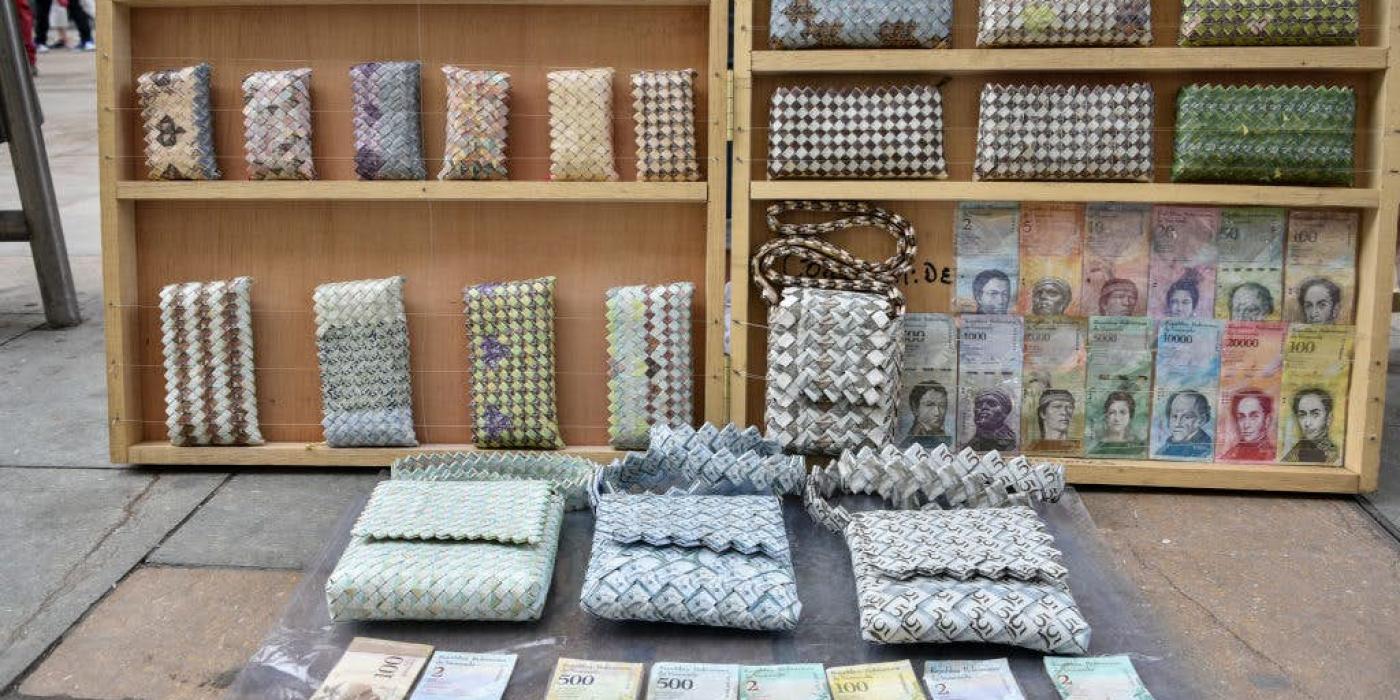On the streets of Colombia, from Bogotá to Cúcuta, artists are selling intricately crafted handbags and other beautiful accessories made from Venezuela’s colourful bolívar bank notes.
The old Venezuelan bolívars (also known as bolívar fuerte) are no longer in circulation and have been replaced by bolívar soberano.
Old Bolívar Notes Worth More As Raw Material
Due to hyperinflation, Venezuela’s currency has been devalued to the point that it is literally not worth the paper it is printed on. The notes are worth more to artists as a raw material than as actual money. An item made up of 1,000 bills totalling 100,000 bolivares is worth around US 20 cents in notes, but can sell at around $20 as a purse. As one merchant in Cúcuta commented:
It would make more sense to rip this up and turn it into confetti than to try to use it to buy confetti, which would be more expensive.
Capino Porra (a merchant and retired Venezuelan military official)

The Government is So Poor It Cannot Even Afford to Print Money
Millions of Venezuelans have fled to neighbouring Colombia to escape civil unrest and a growing financial crisis. Venezuela is in dire straits. Even paper money itself is scarce. The government is so poor that it cannot even afford to print more money, forcing many to rely on bank transfers for even the smallest payments.
Venezuela and other Latin American countries are turning to Bitcoin and cryptocurrencies as their currencies see rising inflation and lose purchasing power. We have also seen that Argentina inflation has hit 42.6% as Bitcoin prices surge in the country.

